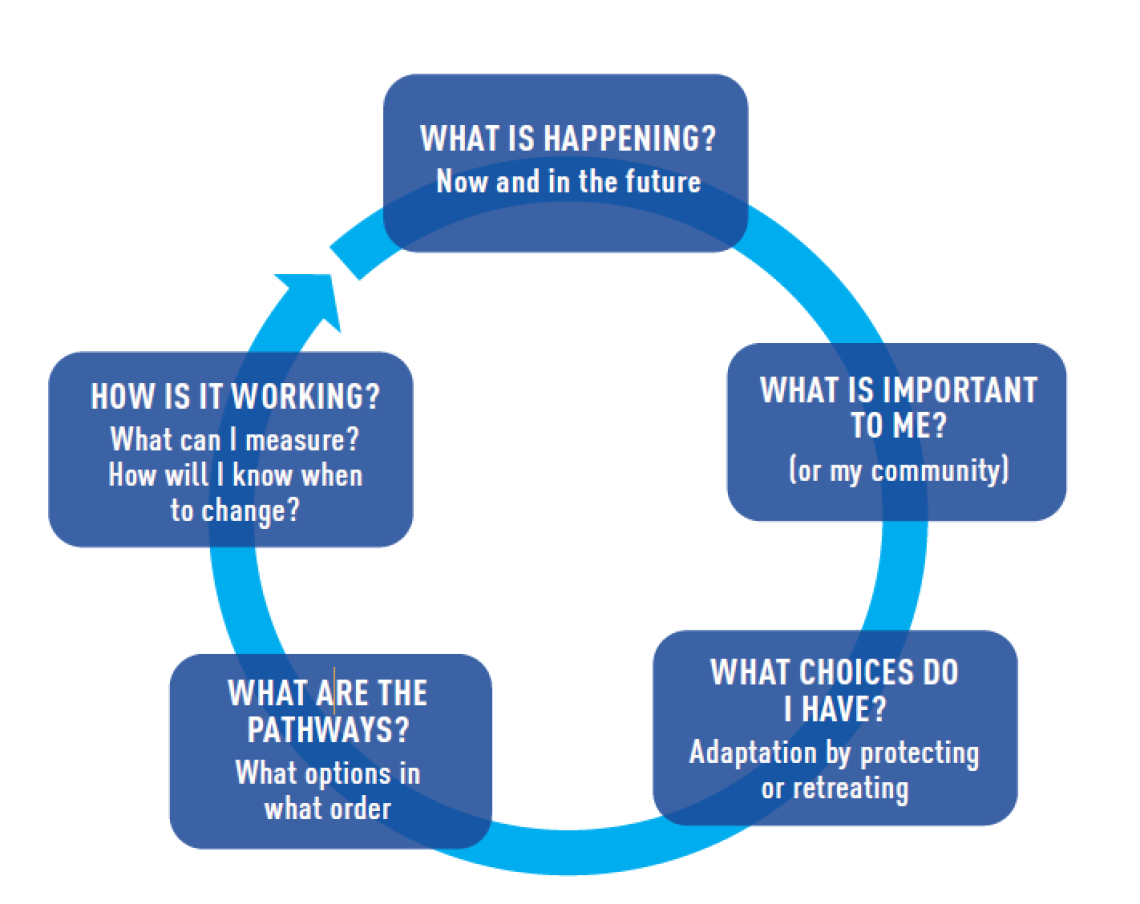Climate change is already affecting communities and livelihoods in New Zealand through increased temperatures, longer droughts and more intense storms.
The need for appropriate action is becoming more urgent. We know that by making sound choices now and in the future, we can make sure that we, our whānau and communities can live well in our changing world.
Making the best choices on how to respond to the effects of climate change can be complex – there will be both challenges and opportunities ahead. It requires an understanding of the physical world around you, what science is saying about the future climate, decisions about what needs to be protected, what you would be willing to change and what that would cost.
Pathways thinking – a five-step framework to guide our planning
This five-step framework is a way to guide your thinking about your response to climate change.
Pathways thinking is a planning approach that allows for the uncertainty and change by encouraging us to imagine many different futures. It does this by focussing on planning and that there will be many ways to find our way through the challenges of our future climate.
It takes into account what is important to individuals, whānau and communities. It helps us to consider the many different options in front of us; how long these might be effective for and when we might need to change tack.
Pathways thinking supports decision-making and investments in stages. It encourages people to identify triggers (for example a flood), and to make decisions in advance about what to do if that trigger occurs.
Using pathways thinking allows us to develop strategies for expected climate impacts, while not compromising or shutting-off other options. This flexible approach recognises that conditions can change and means we avoid being locked in to any one course. Pathways thinking is an approach that is in the Ministry for the Environment's coastal hazards guidance and is being used by councils and others around Aotearoa as they plan how to adapt to a changing climate.
Step 1: What is happening?
- What could happen at my place and in my community?
- How vulnerable could I be to this?
Step 2: What is important to me?
- What are my goals, now and in the future?
- Which of my goals is the most important: to me, my whānau, my community?
- What could be affected by climate change that I value or need?
Step 3: What choices do I have?
- How can I adapt?
- What are the options at my place?
Step 4: What are the pathways?
- What can I do now?
- What can I do later?
- What can I do much later?
- What are my triggers for change?
- Make my plan
Step 5: How is it working?
- What changes should I look for?
- Is my current strategy working? Does it meet my needs and those of my whānau and community?
- When will I change options?
- Are there any new choices available?

